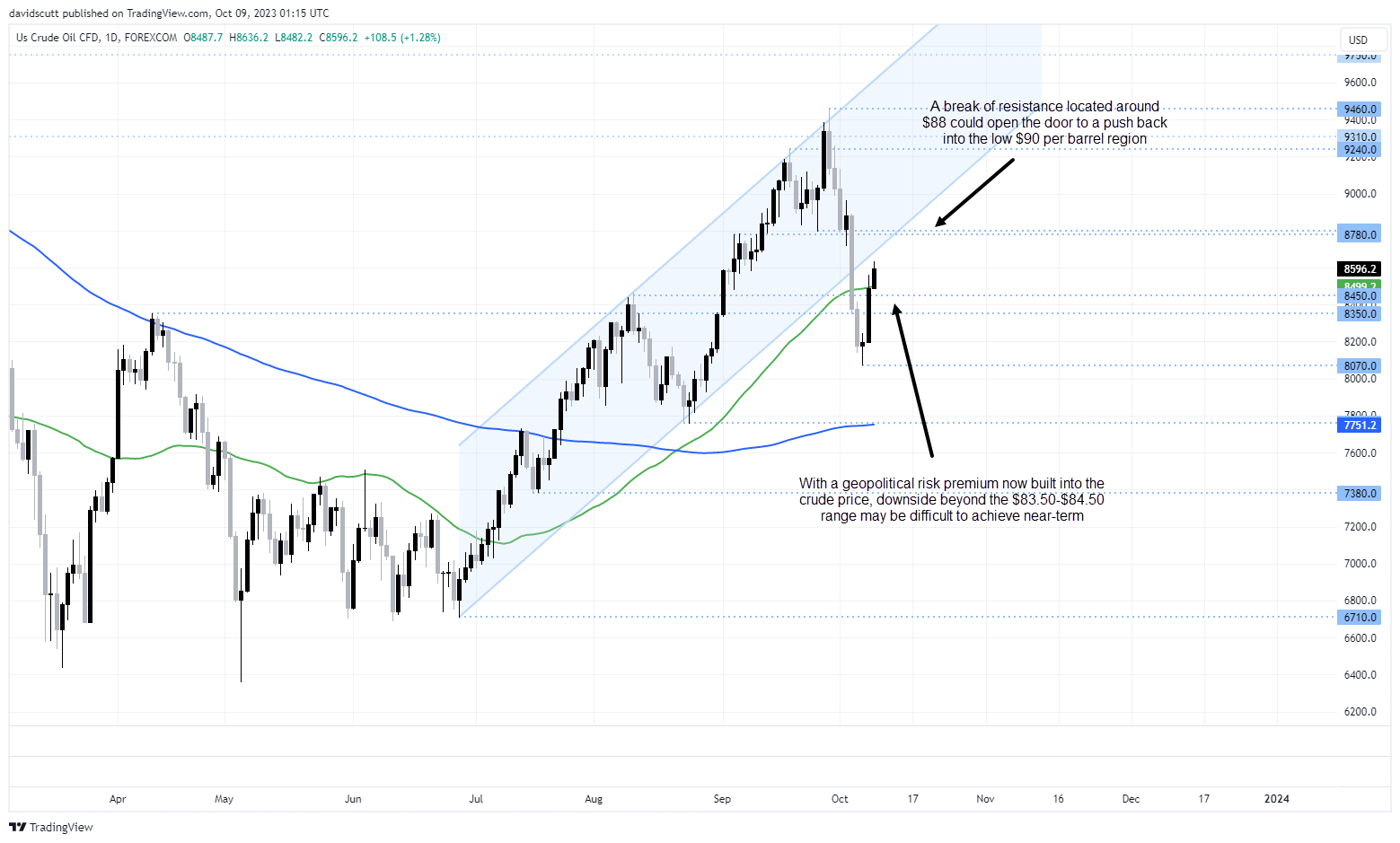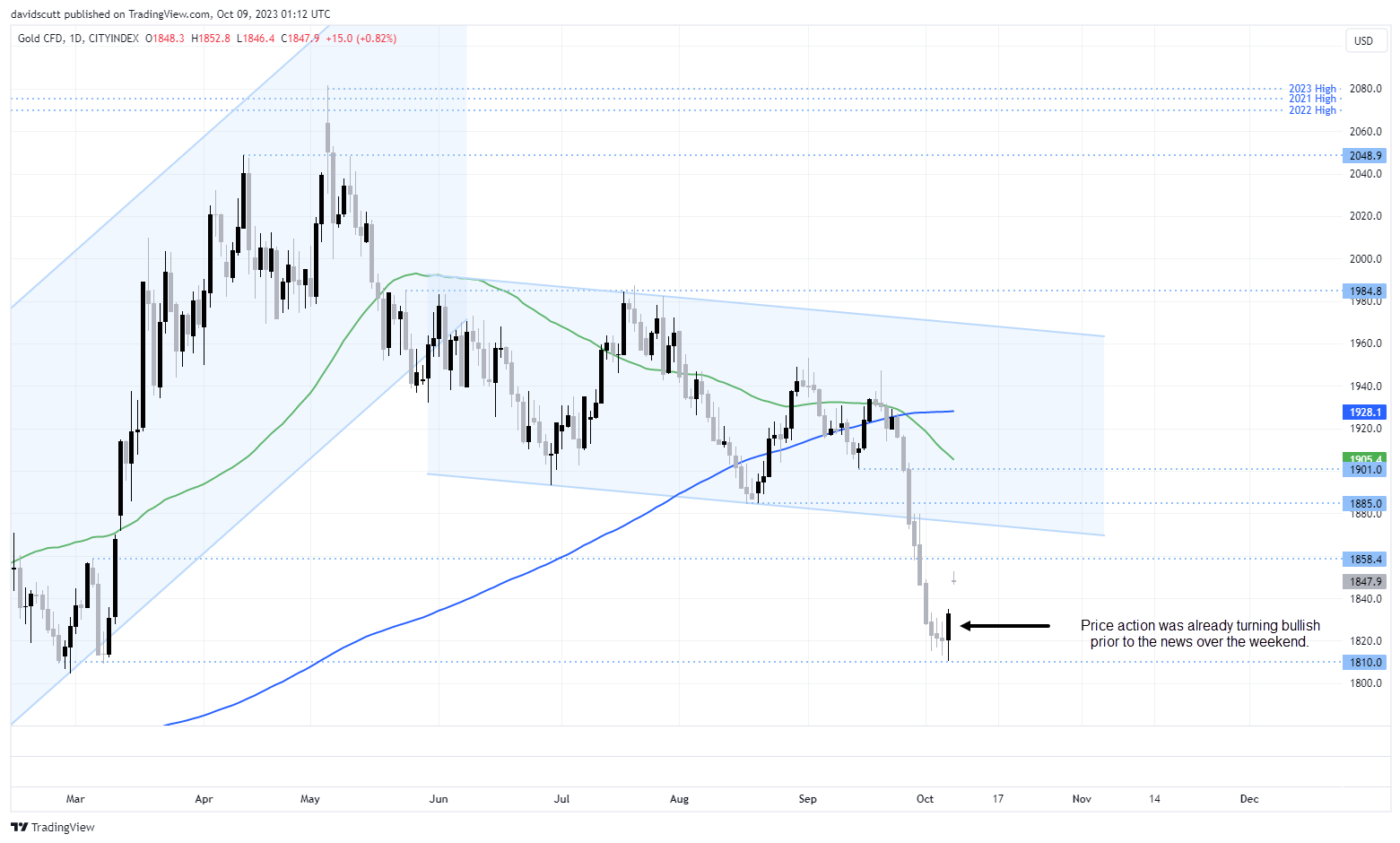
Crude oil prices have spiked in response to renewed conflict in the Middle East, partially reversing what was the largest decline in over six months week. It serves as a reminder on just how fragile the global market balance is right now, reflecting the influence of strong demand from China and the US during a time of restricted supply from OPEC and its allies. Gold, too, has also attracted bids on increased risk aversion after what was an equally ugly week, building on Friday’s bounce to gap higher in early Asian trade.
Crude hammered last week on supply and demand factors
Having surged over 40% since the end of June, crude’s golden run came to a shuddering end last week, hit by renewed downstream demand concerns from the US following an unexpectedly large build in gasoline inventories, along with news Russia had lifted its ban on diesel exports delivered by pipeline, overriding an extension of production and export curbs from OPEC+ which had been already well flagged to the market.
Technical selling and stretched short-term long positioning contributed to the more than 10% weekly decline in crude, reflecting just how long the market had become as traders chased the market higher in search of $100 per barrel or higher.
Middle Eastern conflict could easily disrupt seaborne supply
While it was an ugly week for crude, the attack on Israel by Hamas -- which could have major implications for seaborne markets given the potential implications for the energy rich region – could easily reverse those moves and more as seen when Russia invaded Ukraine. Throw into the mix the return of mainland Chinese markets following Golden week holidays, including reports of an enormous increase in holiday travel relative to pre-pandemic levels – and the dour demand concerns that created pessimism last week may also start to be questioned.
You can see just how violent the trend change for crude has been on the daily chart with the uptrend channel running from June breached to the downside midway through last week, sending prices tumbling to $80.70 before the latest rebound.
Geopolitical risk premium now priced in
In early Asia trade on Monday, the price sits comfortably above a prior support zone located between $83.50 and $84.50, suggesting this area may become a tough area to breach to the downside given the geopolitical and supply-side risk premium that has now been build in. As for upside levels to watch, former uptrend support around $87 and then a resistance layer just before $88 should be on the radar. A breach of those could easily lead to a probe into the low $90 region in quick fashion.

Gold pops higher after ugly week
Gold has been another commodity that’s outperformed in the immediate aftermath of the attack on Israel, finding solid buying on increased risk aversion, more than offsetting headwinds generated by a sharply higher US dollar.
This is the type of environment in which gold usually thrives, suggesting the near-term bias will likely be to buy dips rather than sell rallies, even with the poor price action seen last week. $1858 is the first topside level to watch, along with $1876 and then a resistance zone running from $1885 up to $1900.
Price action was already turning bullish prior to the Israel news
On the downside, the bullish outside daily candle produced on Friday, along with the preceding price action in the prior few days, suggests there’s decent demand found ahead of $1810. Given many of the opening gaps in FX pairs appear to be in the process of being closed, there may be a temptation to do the same with bullion, providing a potential lower entry level for longs.

-- Written by David Scutt
Follow David on Twitter @scutty



